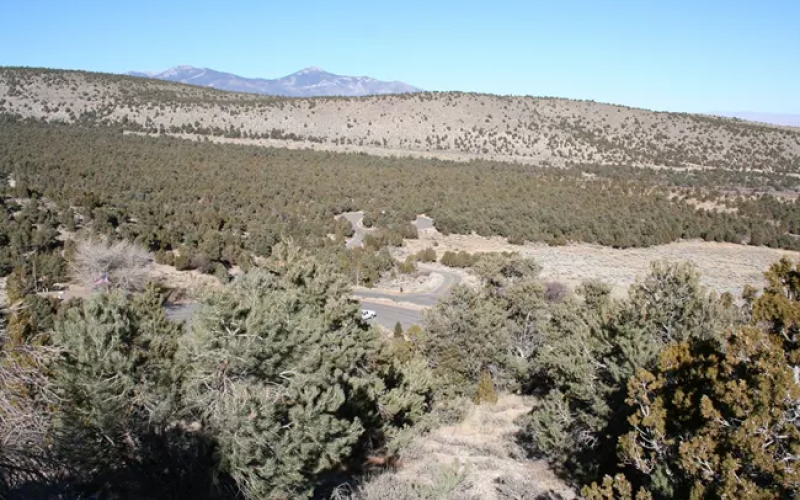The Midden: Thinning Project

Photos: Images of Rhodes Cabin in 1940 (left) and the Lehman Caves Visitor Center parking lot in 2022 (right) demonstrate the change in tree cover. National Park Service.
This article is the second in a series of posts showcasing articles published in the Summer 2022 issue of “The Midden”, Great Basin National Park’s semiannual resource management newsletter. The series will introduce you to some of the issues, projects, and management strategies currently happening in Great Basin National Park.
Julie Long, a Supervisory Biological Science Technician at Great Basin National Park, and Bryan Hamilton, the Park’s Acting Integrated Resource Management Program Manager, discuss recent tree clearing initiatives in the Park. Tree removal by fire crews plays an important role in protecting facilities from fire and maintaining ecological balance.
Thinning Project Outreach
By Julie Long, Supervisory Biological Science Technician and Bryan Hamilton, acting Integrated Resource Management Program Manager
In October 2021, fire crews began work on the 65-acre Boundary Thin. This is one of several projects the park is working on to reduce fuels, protect life and property, and restore plants and animals. Based on questions and comments from the community and visitors, we wanted to provide more information on this project.
Why Were Trees Cut? Trees were cut to protect buildings from fires. For the past 100 years, land managers excluded wildfires from the park. But scientific research has shown that this policy has made fires larger and more dangerous. Without fires, trees have expanded, creating dense areas of heavy woody fuel. Compare the images to the right. Pinyon pine and juniper trees have increased over 150% in the Great Basin since European colonization, increasing high intensity, catastrophic fires. These megafires are deadly. They devastate landscapes, destroy homes, and create flooding. Cutting trees provides a fuel break between the park and private residences, to slow down or stop a fire moving up or down the Lehman Creek drainage.
Why Should You Care? Tree removal is good for plants and animals. Pinyon and juniper trees compete with grass and sagebrush for water and sunlight. Without fires, trees crowd out sagebrush and grasses. Sage grouse depend on sagebrush habitat and are also declining due to tree encroachment. Tree removal projects like the Boundary Thin are used by biologists to restore native plants and animals, like sage grouse and pygmy rabbits. Historically, low intensity fires burned frequently, holding back tree encroachment, and favoring sagebrush and grasses. These fires, ignited by lightning or Native Americans, are sometimes called good fires. Tree removal is an important first step in reintroducing natural, good fires to the park.
Let’s Keep the Conversation Going! If you have other questions, please contact Bryan Hamilton, acting Integrated Resource Management Program Manager by phone: 775.234.7563
Additional Information
https://pubs.usgs.gov/of/2018/1034/ofr20181034.pdf
https://www.sagegrouseinitiative.com/
